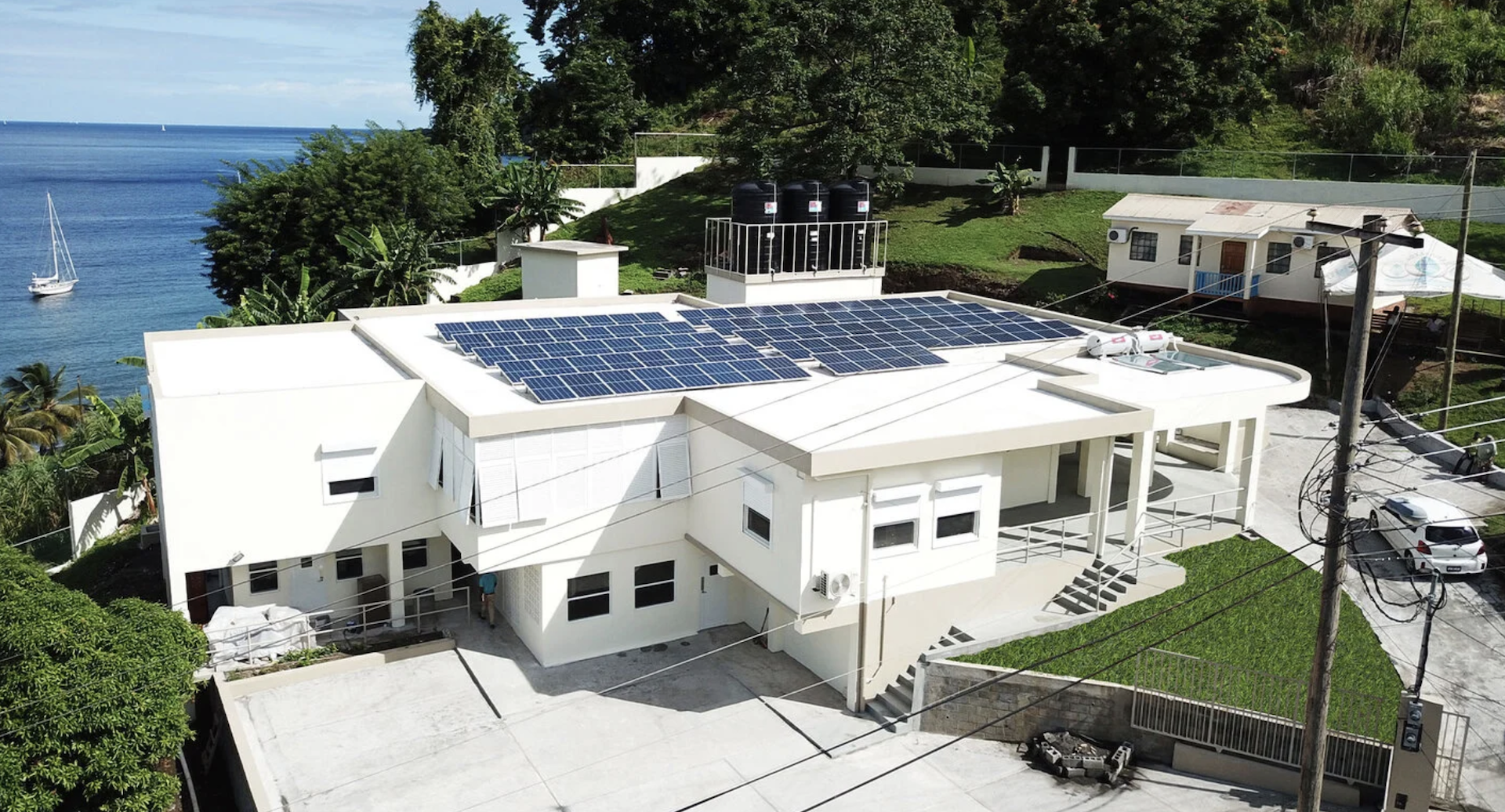Climate-smart health systems
Safer, greener health systems are the way forward for people and planet – especially in climate-vulnerable regions – and an initiative in the Caribbean is delivering co-benefits to climate, the environment and human health
I
f you have survived an extreme climate event such as a hurricane or cyclone, or perhaps you are ill or injured as a result of such a calamity, the last thing you need is for the health centre or hospital to be damaged and non-functional. That is why we need climate-smart health systems, with an informed and empowered community, that are better at anticipating, predicting, responding and recovering from climate extremes, with health facilities that are safer, greener and health promoting for staff. A key element of such a programme is under way in the Caribbean, in the PAHO Smart Hospital programme, delivering co-benefits to climate, the environment, and the health of residents and visitors.
Although climate change adversely affects health in many ways, the health system contributes an estimated 4.4% of global carbon emissions, greater than Japan or Brazil. Because the largest contributor is energy generation and distribution, switching to renewables such as solar power would reduce operational costs, cut carbon emissions and ensure continuity of critical patient care in the event of extreme weather and blackouts.
The Caribbean has some 30 small island developing states, including independent countries and territories of France, the Netherlands, the United Kingdom and the United States. The region is highly vulnerable to the negative impacts of climate change, as recognised by the United Nations and the G20. A landmark conference on climate change and health in Caribbean SIDS in October 2021 brought together more than 25 partners to explore the increasing impact of climate change such as hurricanes and floods, heat, drought and crop failures, air pollution, sea level rise, vector-borne diseases, damage to infrastructure, population displacement and migration.
The Pan American Health Organization estimates that two-thirds of health facilities are in climate-vulnerable areas, often near coasts, exposed to storm surge and sea level rise, flooding and landslides. In the early 2000s, with increasing damage from storms, the PAHO Safe Hospital programme commenced with a focus on improving safety and resilience to hazards such as hurricanes and earthquakes. Since 2010, it has evolved to be smart and include greening, such as energy and water conservation. Smart Hospitals are strategically built or retrofitted to resist disaster events and provide services under emergency conditions, using resources more efficiently and reducing environmental footprints. The project is a partnership with the UK’s Foreign, Commonwealth and Development Office and various Caribbean countries. Piloted in 2012 in Saint Vincent and the Grenadines and Saint Kitts and Nevis, it was extended to seven English-speaking Caribbean countries and has been instrumental in retrofitting at least 50 smart health facilities.
The expanding climate-smart health facilities programme to include measures to promote the health and well-being of staff, such as providing more green areas with trees, more plant-based diets and active transportation, such as walking and biking, would yield further benefits for health and the environment and may help with retaining staff through improved working conditions.
Scaling up health facilities
However, only 50 of the more than 500 hospitals in the Caribbean have been through the PAHO Smart Hospital programme. The key challenge is how to scale up rapidly from 50 to 500 by 2030. It could be done by establishing an expanded multi-stakeholder initiative for climate-smart hospitals. Clusters of Smart Hospitals as mentors and aspiring facilities could be established, matched by size, function and language, and supported by an online integration platform for each cluster of hospitals and health facilities, within and across countries and territories.
It takes approximately one year for a medium-sized district or regional hospital or polyclinic to go through the programme at an average cost of $1 million per facility. That includes calculating a hospital safety index and a green checklist that identifies areas that can conserve resources, cut costs, increase efficiency in operations and reduce a health facility’s carbon emissions. The programme includes capacity-building training for staff, as well as for the construction sector – both designers and contractors. Specialised multidisciplinary training can also be developed to support the initiative by partners such as the Global Consortium on Climate and Health Education, and the EarthMedic and EarthNurse Foundation for planetary health, headquartered in Trinidad and Tobago, which has been running training courses on climate and health for the Caribbean.
Co-benefits for health and climate
There are so many co-benefits for health and the climate from such an initiative, including:
- Enhanced strategic resilience of health facilities and health systems to advancing climate change and extreme weather events, including sea level rise.
- Reduced carbon footprint for the health system, especially if the programme includes vehicle fleets and health staff.
- Energy cost savings and reduced carbon emissions, for a region with some of the highest energy prices in the world, by scaling up use of renewables such as solar power.
- Improved community resilience and continuity of access to services after extreme weather events for residents and the 50 million visitors annually.
- Possible economies of scale in procurement of products and services needed across countries; for example, Trinidad and Tobago has an industrialised economy and the region’s only engineering school, which can partner with other countries.
- The opportunity to export the know-how to other countries, including SIDS, that would benefit.
Partners and stakeholders for an expanded smart health initiative could include the Caribbean countries and relevant regional institutions, private-sector entities in construction and renewable energy, civil society organisations such as EarthMedic, and academia. It could extend internationally to include France, the Netherlands, the UK, the US, Canada, Germany, Italy, Japan and beyond, and could include development partners such as PAHO and the World Health Organization, the World Bank and the Inter American Development Bank.












